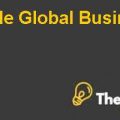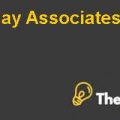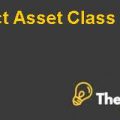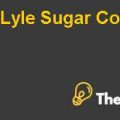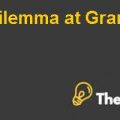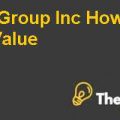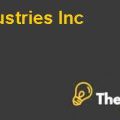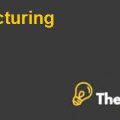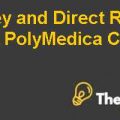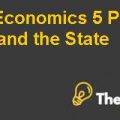
Introduction
The report presents a case about Tandean Rustandy Company, which is one of the leading departmental stores in U.S. The company offers nationally recognized brands of fashion apparel, shoes and related accessories, cosmetics, home furnishings and other related merchandise. The company had enjoyed tremendous success over the last few years and succeeded to achieve competitor’s edge by providing high quality brands to their customers.
Tandean Rustandy Company’s core mission is to obtain a dominant position in departmental stores, so they are considering to invest heavily in their operations in order to enjoy tremendous growth. The core strategy of the company is to target demographic market that desires high quality product, so in order to target those customers the organization conducts ongoing marketing research and sales promotion strategies through social media and broadcasting activities, which will help the organization to target specific market and help them in generating sufficient revenues.
Further, the company has also been attempting to improve its efficiency and productivity, so they have developed computerized system to support its merchandise and inventory management. The data from the new implemented system has helped the organization to identify and respond to consumer trends quickly. Additionally, it has also helped the organization to order merchandise efficiently and to minimize distribution cost substantially.
Problem Statement
The management was concerned about the potential expansion of the company’s operations, which will require an investment in the company. However, all the executive members were concerned about the potential impact of investment on the capital structure of the company because different group of owners have different views about the financial strategy and capital structure of the company.
Analysis
Part 1
A. Unlevered FCF, Equity FCF and reconciliation of Equity FCF to changes in cash balance
Our analysis in Appendix 1 shows that unlevered free cash flows of the company for current year are $222.31 million, whereas it is expected that it will increase to $733.86 million in the 11th year. Further, FCF to the common equity ranges to $217 million in the current year with an expected increase to $722 million, which reconciles the equity FCF to changes in cash balance.
B. Cost of equity and weighted average cost of capital (WACC)
Our analysis in Appendix 2 shows that the company’s cost of equity amounts to 11.92% and Weighted Average Cost of Capital (WACC) amounts to 8.46%. It has been calculated by considering the following assumptions.
- Risk free rate is assumed to be 3%.
- Market premium is assumed to be 6%.
- Unlevered beta amounts to 1.18; it has been calculated by considering average levered beta and average debt to equity ratio of comparable companies.
- Levered beta of the company amounts to 1.49; it has been calculated by ungearing beta of market comparable and gearing it to the company’s debt to equity ratio.
- Tax rate is assumed to be 35%.
C. Valuation using weighted average cost of capital (WACC) and determination of equity value and stock price
Enterprise value of the company has been calculated, which amounts to $7,002 million and when the debts of $120 million have been deducted from it then it gives an equity value of $6,882 million. Free cash flows have been determined from previous scenario and terminal value has been calculated for the cash flows that are expected to be generated by the company in future. The company expects that the cash flows are expected to grow with a perpetuity growth of 2%, which gives a terminal value of $11,590 million.
D. Total cash distribution to owners
The enterprise value of the company using the current WACC of 8.46% has been calculated as $7,002 million and the excess assets of the company are $400 million because the company no longer uses land in its operations, which amounts to a total of $7,402 million. Further, when the debt of $20 million and preference shares of $100 million has been deducted from the total value then it provides a value of $7,282 million, which are attributable to common shareholders.
Part 2
A. Present value weighted average growth rate
Terminal growth of comparable companies has been calculated by assuming that the cash flows of such comparable companies grow at constant rate between year 1 and year 5. Further, it has also been assumed that the future cash flows of comparable companies will also grow with previous growth rate. In order to determine the average growth rate, compound annual growth rate formula has been performed in Appendix 5, which provides terminal growth rate of 3.07%, 5.5% and 2.39% for Knee Mark Store, Cole, Inc. and Hit the Wall Inc. respectively.
Part 3
A. Valuation of company’s common equity, stock price and ESOs using the effects of ESOs
On the basis of our analysis in Appendix 6, the equity value of the company amounts to $6,882 million and there are 200 million outstanding shares, which provide ...............
This is just a sample partial case solution. Please place the order on the website to order your own originally done case solution.

